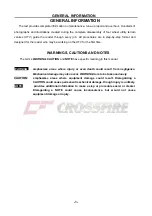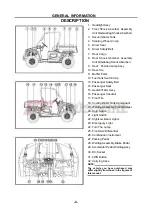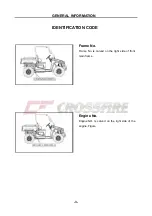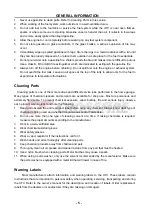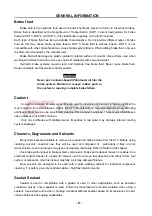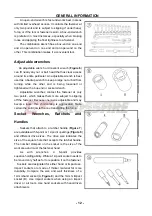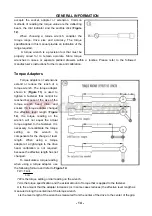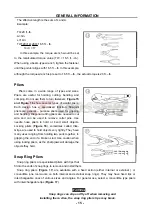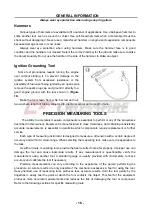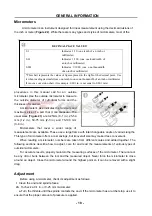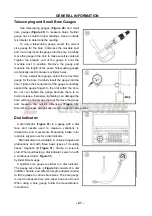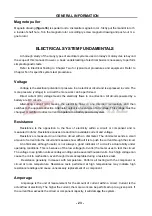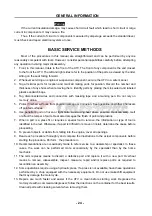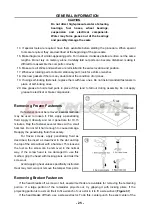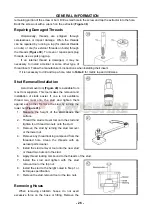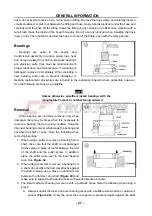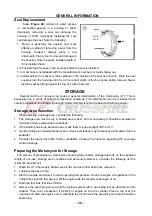
GENERAL INFORMATION
- 15 -
The effective length is the sum of L and A.
Example:
TA=20 ft.-lb.
A=3in.
L=14in.
TW=20×14=280=16.5 ft. - lb.
14+3 = 17
In this example, the torque wrench would be set
to the recalculated torque value (TW = 16.5 ft. –lb.).
When using a beam-type wrench, tighten the fastener
until the pointer aligns with 16.5 ft. –lb. In this example,
although the torque wrench is pre set to 16.5 ft. –lb., the actual torque is 20 ft. –lb.
Pliers
Pliers come in a wide range of types and sizes.
Pliers are useful for holding, cutting, bending, and
crimping. Do not use them to turn fasteners. Figure 15
and Figure 16
show several types of useful pliers.
Each design has a specialized function. Slip-joint
pliers are general – purpose pliers used for gripping
and bending. Diagonal cutting pliers are needed to cut
wire and can be used to remove cotter pins. Use
needle nose pliers to hold or bend small objects.
Locking pliers (Figure 16), sometimes called Vise-
Grips, are used to hold objects very tightly. They have
many uses ranging from holding two parts together, to
gripping the end of a broken stud. Use caution when
using locking pliers, as the sharp jaws will damage the
objects they hold.
Snap Ring Pliers
Snap ring pliers are specialized pliers with tips that
fit into the ends of snap rings to remove and install them.
Snap ring pliers (Figure 17) are available with a fixed action (either internal or external ) or
convertible (one tool works on both internal and external snap rings). They may have fixed tips or
interchangeable ones of various sizes and angles. For general use, select a convertible type pliers
with interchangeable tips
(Figure 17).
WARNING
Snap rings can slip and fly off when removing and
installing them. Also, the snap ring pliers tips may break.

